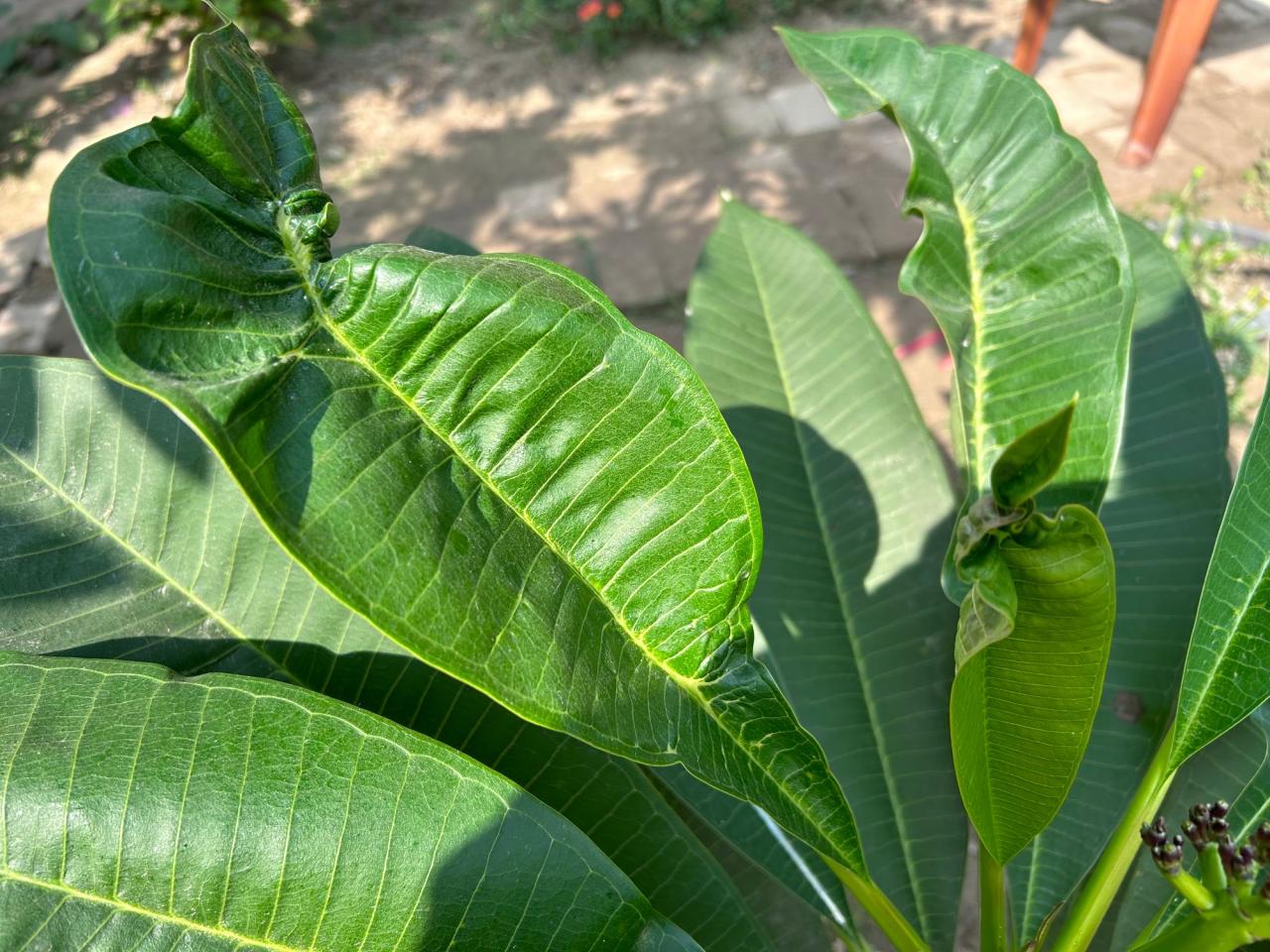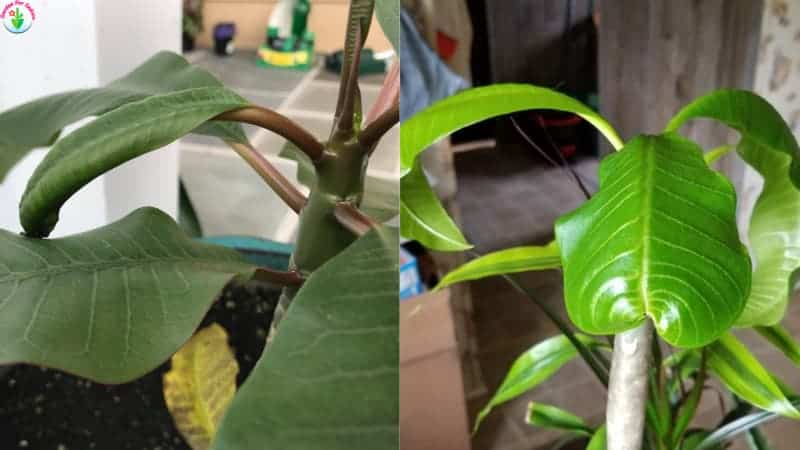Curling Plumeria Leaves – Plumeria, known for its stunning flowers and lush foliage, is a popular choice among gardeners and homeowners alike. However, many enthusiasts encounter a common issue: curling leaves. This phenomenon can be alarming, especially for those invested in their plant’s health. Understanding why plumeria leaves curl and how to address this issue is crucial for maintaining a beautiful and thriving plant. 🌿
Understanding Plumeria Leaf Curl
Leaf curling in plumeria can result from various factors, including environmental stressors, pest infestations, and nutrient deficiencies. It’s essential to diagnose the problem accurately to implement effective solutions. Let’s delve into the primary causes of curling leaves.
Environmental Stressors

Plumeria plants are sensitive to their environment. Changes in temperature, humidity, and light can significantly impact their health. Here are some environmental factors that may lead to leaf curling:
- Temperature Extremes: Plumeria thrives in warm climates but is susceptible to damage from extreme heat or cold. Temperatures below 50°F (10°C) can lead to leaf curl.
- Humidity Levels: High humidity can promote fungal diseases, while low humidity can cause dehydration, both resulting in curling leaves.
- Light Exposure: Plumeria requires full sun to flourish. Insufficient light can weaken the plant and lead to leaf curling.
Pest Infestations
Pests can wreak havoc on your plumeria. The following pests are commonly associated with leaf curling:
| Pest | Symptoms | Control Methods |
|---|---|---|
| Aphids | Sticky residue and curling leaves | Insecticidal soap or neem oil |
| Spider Mites | Webbing and speckled leaves | Increase humidity and apply miticides |
| Whiteflies | Yellowing leaves and a sooty mold | Sticky traps and insecticidal soap |
These pests suck the sap from leaves, leading to distortion and curling. Regular inspection and prompt treatment are vital for prevention.
Nutrient Deficiencies
Plumeria requires a balanced diet of nutrients to grow healthy and strong. A deficiency in essential nutrients can lead to curling leaves. Here are some critical nutrients to monitor:
- Nitrogen: Essential for leaf growth; a deficiency may cause leaves to curl and turn yellow.
- Potassium: Important for overall plant health; low potassium can cause leaf edges to curl and die back.
- Magnesium: Deficiency can lead to interveinal chlorosis and curling, often mistaken for pest damage.
Regular soil testing and appropriate fertilization can help maintain the right nutrient balance. 📈
Identifying Curling Leaves in Plumeria
To effectively treat curling leaves, it’s important to identify the type of curl you’re observing. Here’s how to differentiate:
Types of Leaf Curl
Leaf curling can manifest in various forms:
- Downward Curl: Often indicates environmental stress, such as heat or drought.
- Upward Curl: This may be a reaction to overwatering or high humidity levels.
- Twisting Curl: Typically the result of pest damage, particularly from aphids or spider mites.
By observing the direction and nature of the curl, you can better determine the underlying cause and apply the correct remedy.
Solutions for Curling Plumeria Leaves

Once you’ve identified the cause of curling leaves, it’s time to implement effective solutions. Let’s explore some practical strategies to help restore your plumeria to health.
Adjusting Environmental Conditions
Improving your plant’s environmental conditions can prevent leaf curling:
- Temperature Management: Keep plumeria in a stable environment with temperatures ideally between 60°F (15°C) and 80°F (27°C).
- Humidity Control: Aim for a humidity level of 40-60%. You can increase humidity by misting or using a humidifier.
- Optimal Lighting: Ensure your plumeria receives at least 6 hours of direct sunlight per day. If indoors, consider supplemental grow lights. ☀️
Treating Pest Infestations
Effective pest control is essential to curb the damage caused by insects:
Regular monitoring and early detection are key to preventing serious infestations. Keep your plumeria healthy and free of stress to make it less appealing to pests.
Here are some steps you can take:
- Neem Oil: This natural pesticide is effective against many common pests and is safe for your plant.
- Insecticidal Soap: Spray affected areas thoroughly to suffocate pests.
- Introduce Beneficial Insects: Ladybugs and lacewings can help control aphid populations.
Correcting Nutrient Deficiencies, Curling Plumeria Leaves
To address nutrient deficiencies, consider the following:
- Soil Testing: Before applying fertilizers, conduct a soil test to identify nutrient levels and pH balance.
- Balanced Fertilizer: Use a balanced fertilizer (N-P-K ratio of 10-10-10) during the growing season to provide essential nutrients.
- Organic Amendments: Incorporate compost or well-rotted manure into the soil for gradual nutrient release.
Additionally, applying Epsom salt can help correct magnesium deficiencies and promote healthy leaf development. 🪴
Preventative Measures for Healthy Plumeria: Curling Plumeria Leaves
Taking preventative measures can help avoid the occurrence of leaf curling in plumeria. Here are some strategies:
Proper Watering Techniques
Watering is one of the most critical aspects of plumeria care. Overwatering or underwatering can both lead to leaf curling:
- Watering Schedule: Allow the soil to dry out between waterings. Check the top inch of soil; if it feels dry, it’s time to water.
- Drainage: Ensure your pot has drainage holes to prevent root rot, which can lead to curling leaves.
- Water Quality: Use room temperature water. Cold water can shock the roots, causing stress and leaf curl.
Regular Maintenance
Maintaining your plumeria through regular pruning and cleaning can keep it healthy:
- Pruning: Remove dead or damaged leaves and spent flowers to encourage new growth.
- Leaf Cleaning: Wipe leaves gently with a damp cloth to remove dust, which can obstruct photosynthesis.
- Fungal Prevention: Apply fungicides as needed, especially in humid conditions, to prevent fungal diseases.
Seasonal Care
Adapting your care routine to the seasons is essential for plumeria health:
- Winter Care: In colder months, move potted plumeria indoors to avoid frost damage.
- Summer Care: During hot months, provide shade during peak heat and ensure consistent watering.
By following these preventative measures, you can significantly reduce the risk of leaf curling in your plumeria plants. 🌼
When to Seek Professional Help
If you’ve tried multiple remedies and your plumeria continues to experience leaf curling, it may be time to consult a professional. Here are some indicators that expert help may be necessary:
- Persistent pest issues that are not resolved with home treatments.
- Severe leaf discoloration or wilting beyond typical leaf curl symptoms.
- Signs of root rot, such as foul odors or mushy roots when inspecting the soil.
In such cases, a horticulturist or professional gardener can provide insights tailored to your plant’s unique needs.
Understanding the reasons behind curling plumeria leaves and addressing the underlying issues will help ensure your plants remain healthy and vibrant. With the right care and attention, your plumeria can flourish, producing stunning blooms and beautiful foliage. 🌸
